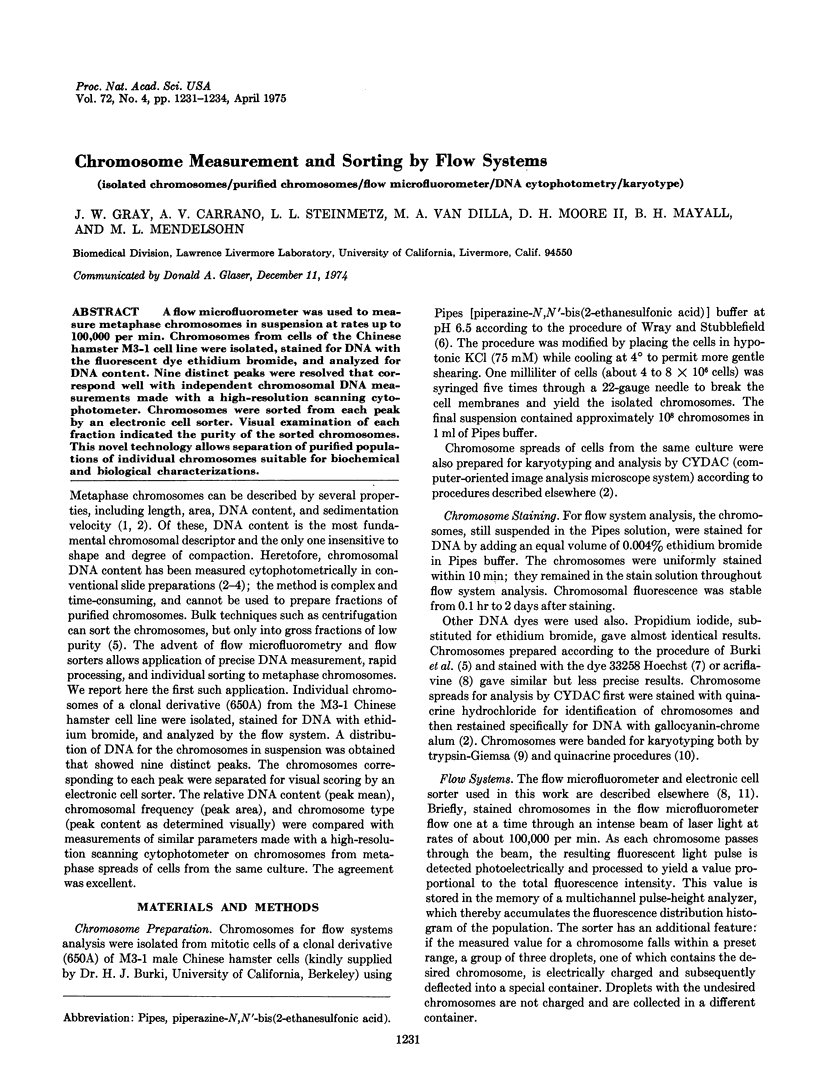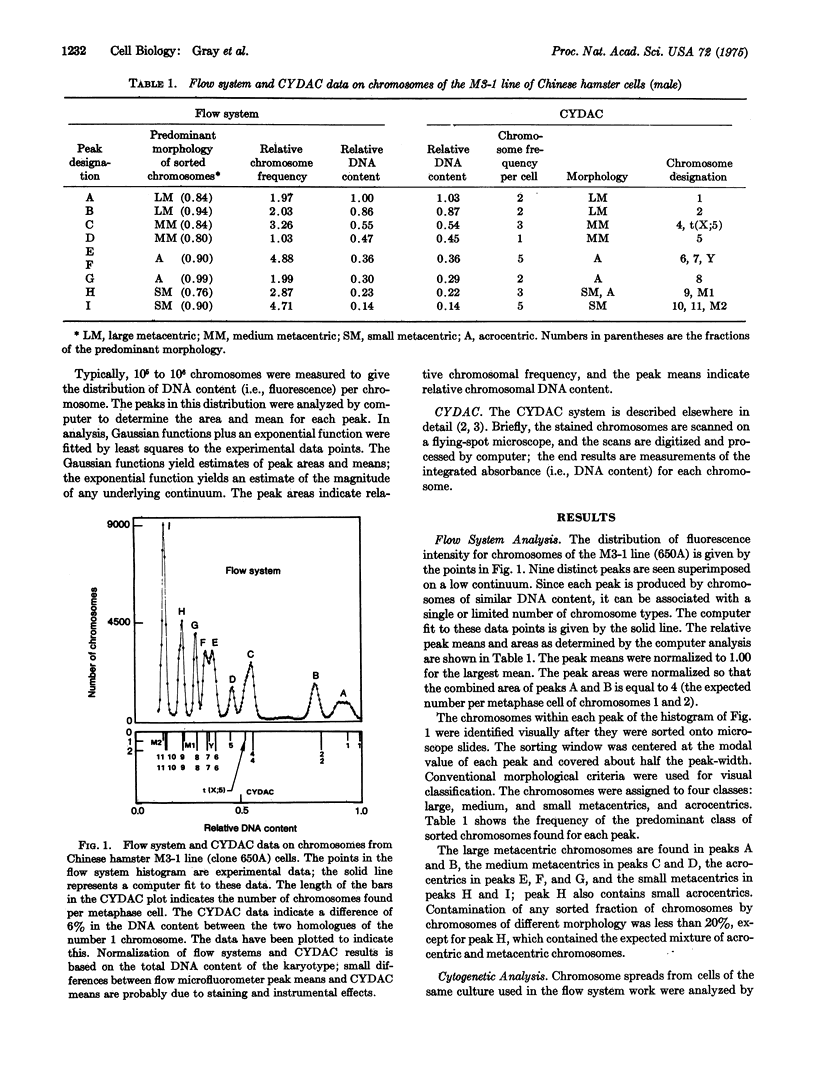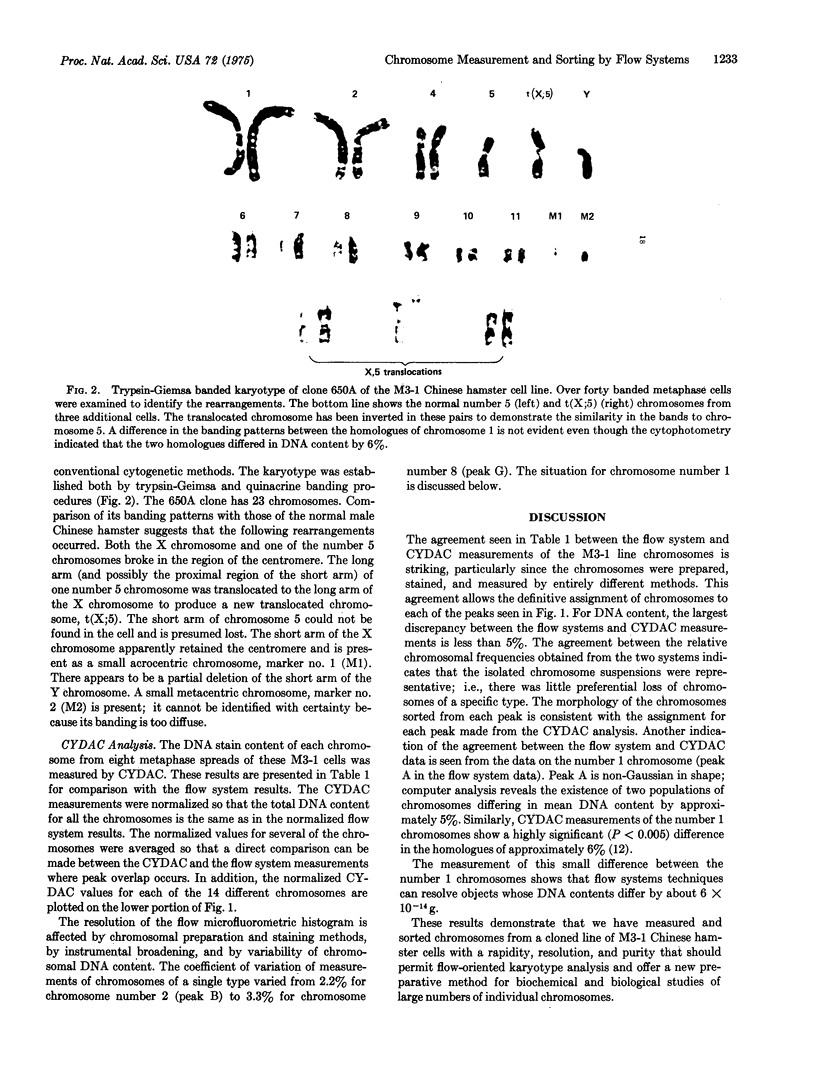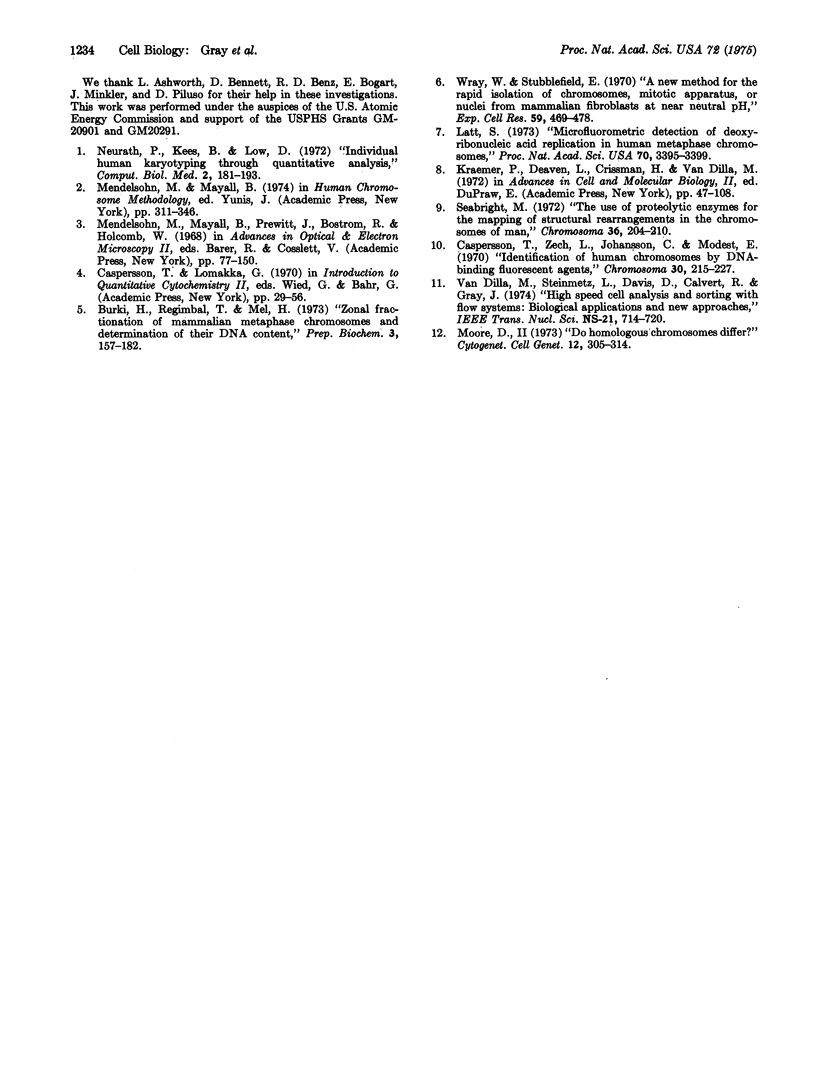Abstract
A flow microfluorometer was used to measure metaphase chromosomes in suspension at rates up to 100,000 per min. Chromosomes from cells of the Chinese hamster M3-1 cell line were isolated, stained for DNA with the fluorescent dye ethidium bromide, and analyzed for DNA content. Nine distinct peaks were resolved that correspond well with independent chromosomal DNA measurements made with a high-resolution scanning cytophotometer. Chromosomes were sorted from each peak by an electronic cell sorter. Visual examination of each fraction indicated the purity of the sorted chromosomes. This novel technology allows separation of purified populations of individual chromosomes suitable for biochemical and biological characterizations.
Full text
PDF



Images in this article
Selected References
These references are in PubMed. This may not be the complete list of references from this article.
- Burki H. J., Regimbal T. J., Jr, Mel H. C. Zonal fractionation of mammalian metaphase chromosomes and determination of their DNA content. Prep Biochem. 1973;3(2):157–182. doi: 10.1080/00327487308061501. [DOI] [PubMed] [Google Scholar]
- Caspersson T., Zech L., Johansson C., Modest E. J. Identification of human chromosomes by DNA-binding fluorescent agents. Chromosoma. 1970;30(2):215–227. doi: 10.1007/BF00282002. [DOI] [PubMed] [Google Scholar]
- Latt S. A. Microfluorometric detection of deoxyribonucleic acid replication in human metaphase chromosomes. Proc Natl Acad Sci U S A. 1973 Dec;70(12):3395–3399. doi: 10.1073/pnas.70.12.3395. [DOI] [PMC free article] [PubMed] [Google Scholar]
- Moore D. H., 2nd Do homologous chromosomes differ? Two statistical tests. Cytogenet Cell Genet. 1973;12(5):305–314. doi: 10.1159/000130469. [DOI] [PubMed] [Google Scholar]
- Neurath P. W., Kess B., Low D. A. Individualized human karyotyping through quantitative analysis. Comput Biol Med. 1972 Oct;2(2):181–193. doi: 10.1016/0010-4825(72)90047-9. [DOI] [PubMed] [Google Scholar]
- Seabright M. The use of proteolytic enzymes for the mapping of structural rearrangements in the chromosomes of man. Chromosoma. 1972;36(2):204–210. doi: 10.1007/BF00285214. [DOI] [PubMed] [Google Scholar]
- Wray W., Stubblefield E. A new method for the rapid isolation of chromosomes, mitotic apparatus, or nuclei from mammalian fibroblasts at near neutral pH. Exp Cell Res. 1970 Mar;59(3):469–478. doi: 10.1016/0014-4827(70)90656-7. [DOI] [PubMed] [Google Scholar]



